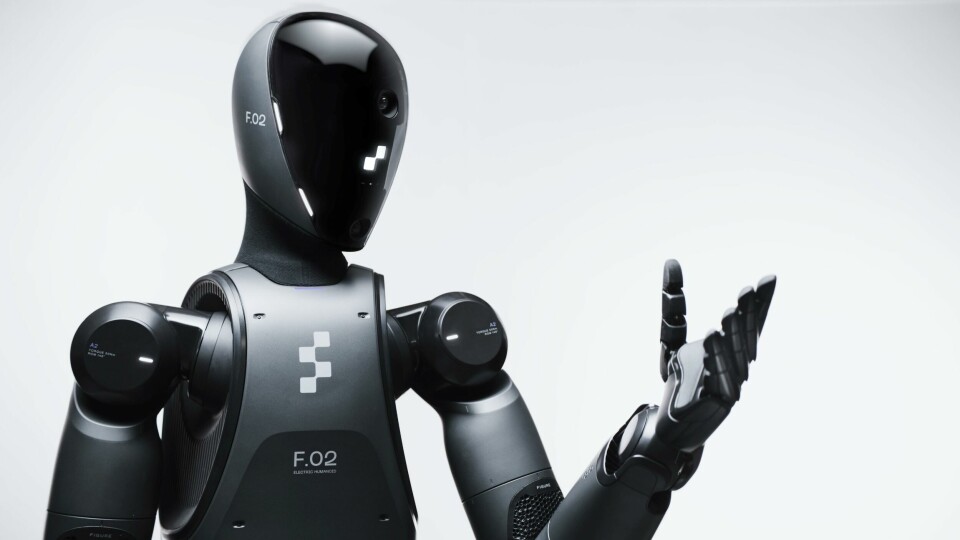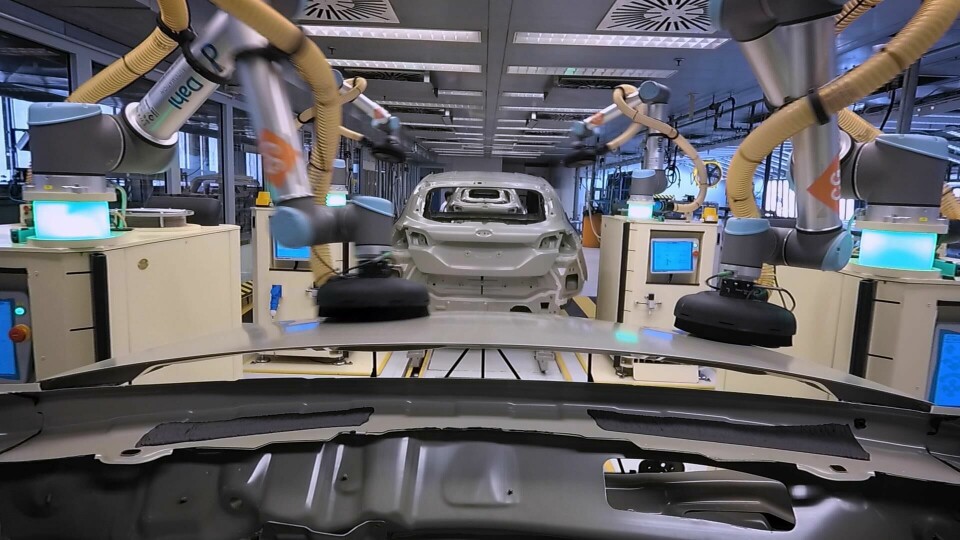
How cobots can support automotive production
Cobots enrich the industry with their ability to complete tasks in close cooperation with humans and are becoming increasingly intelligent thanks to modern technologies. This article takes a look at the different types of robots, and their benefits to the industry.
Robots have long since proven their suitability for physically demanding tasks in the automotive industry. But with the integration of AI, modern camera systems and advanced sensors, they are becoming increasingly intelligent and therefore more interesting for automotive manufacturing companies. These technologies make it possible to meet the growing need for flexibility and easier implementation. The cross-industry shortage of skilled workers can also be curbed to a certain extent through suitable automation concepts. However, robots are not intended to replace employees, but to support them. This is made clear by the development of cobots.
A cobot, short for ‘collaborative robot’, is a robot specifically designed to work closely with humans. Unlike traditional industrial robots, which operate in enclosed areas and often perform dangerous movements, cobots are designed to work safely near humans - without protective barriers or complex safety precautions. They are often equipped with sensors and advanced software that allow them to detect movements of the people around them and react accordingly, for example by reducing their speed or stopping when a person approaches.
These robots are used in a variety of industries, including automotive manufacturing and logistics. They can perform a wide range of tasks, from simple handling tasks to more complex work that normally requires human skill. Their great advantage is their ability to increase efficiency and productivity while improving working conditions for human employees. The smaller cobots are flexible and can be used in close proximity to employees. They are mainly used for monotonous work steps, such as picking components for assembly.
Robot arms as important automation aids
Robotic arms have been established in the automotive industry for a very long time. A robotic arm typically consists of several interconnected segments that can be moved in different directions to perform a variety of tasks. These movements are controlled by motors or actuators, which are often coordinated by a control unit or software.
They can perform tasks such as welding, painting, assembly, packaging and handling materials. Thanks to their high precision and speed, robotic arms can complete tasks faster and often more accurately than humans. There are several types of robotic arms, designed differently depending on the application. Some are rigid and specialised for a specific task, while others can be flexibly programmed for a variety of uses. Modern robotic arms can also be equipped with sensors that allow them to respond to their environment and work more safely alongside human workers.
Audi, among others, relies on the interaction between humans and robots in the production of the E-Tron GT. Here, for example, the assembly of front and rear windows is partially automated without a protective fence. Two workers place a window on a corresponding device, and the robot applies the adhesive. The window is then fitted by hand.
Ford uses cobots in the assembly station in the engine plant and the door line of the Fiesta final assembly, among other places. In the paint shop at the Cologne plant, six collaborative robots have been ensuring perfect surfaces in a choreographic sequence since 2019. The manufacturer is also examining the future use of cognitive robots in Cologne. Compared to previous cobots, this type of robot has more sensors and is equipped with artificial intelligence, enabling the systems to better sense the environment and react to potential dangers. Compared to cobots, according to Ford, the next stage of development of the systems is not only able to carry out clearly defined activities, but also to work together in active interaction with the employee.

What is a humanoid robot?
What the robot arm once started is currently being finalised by humanoid robots, which are modeled on the entire human body in form and function. They have characteristics such as bipedal mobility, human proportions and often hands that offer similar freedom of movement to human hands.
In the automotive industry, humanoid robots are used to assist employees with physically demanding, unsafe or repetitive tasks. Their advanced technical capabilities, including precise tactile skills, complex gripping mechanisms and autonomous motion coordination, enable them to take on tasks that not only improve ergonomics in the workplace but also increase safety. By using these robots, processes can be made more efficient while reducing the burden on human workers.
The employees at the BMW plant in Spartanburg, for example, recently welcomed a new robotic colleague named Figure 02, who will soon help relieve the workforce of strenuous tasks. Although the humanoid robot from California only completed two weeks of testing, it has already made a lasting impression.
“The developments in the field of robotics are promising. With early testing, we are now exploring the possible uses of humanoid robots in production,” explains BMW’s production board member Milan Nedeljković. “We want to accompany this technology from development to industrialization.”
Tesla boss Elon Musk presented a similar system in 2022. However, according to social media posts from the OEM, the robot, called Optimus, is still in the training phase.
Intralogistics benefits from transport robots
Anyone who has entered an automobile or supplier factory in recent years has most likely already encountered driverless transport systems, also known as Automated Guided Vehicles (AGVs). These autonomously operated vehicles or transport robots transport materials, goods or products without human drivers. The transport robots move exclusively along a predefined route using sensors, cameras, magnetic strips, lasers or GPS systems. However, they can detect obstacles and react to them to avoid collisions. A distinction is made between different types of AGV, including forklift AGVs, train AGVs (which pull several trailers) and special AGVs for transporting small parts.
Autonomous Mobile Robots (AMRs) are also transport robots that are used to transport goods and parts in various areas of production. In contrast to driverless transport systems, however, AMRs are flexible in their navigation and can plan their routes more dynamically. Their control systems can recalculate or change routes if necessary.
‘AGVs are like trams, AMRs are like taxis’
“So, you could say that AGVs are like trams that require control and a fixed route network, while AMRs are like taxis that can change their route spontaneously because they can orient themselves independently in their environment,” says the German Robotics Association, comparing the two systems.
However, this does not mean that AMRs are generally the better transport systems. Thanks to their more robust navigation, the German Robotics Association describes the driverless transport systems as less susceptible to failure and also more resilient.
One example of such systems is the EffiBOT, which has been used in Seat production since 2021. The system, developed by the French company Effiedence, analyses its own environment using integrated sensors and is thus able to follow individual employees, for example. On the way through the factory, the system does not require any further support - even if people or objects cross the path. The EffiBOT can carry a weight of up to 250 kilograms or pull up to 500 kilograms. In addition, other cobots are used in various other areas of Seat production, including robots that attach lettering to the models or drones.
With many different types, benefits and uses, it is clear that cobots are transforming OEMs’ efficiency in manufacturing operations, and as technology continues to progress, we are certain to see more benefits to come.


